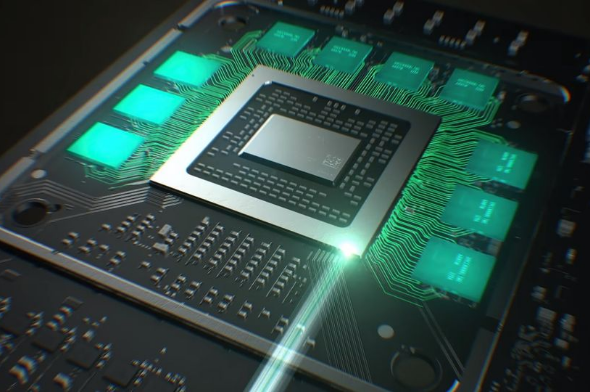Connection to DriversCloud Create a DriversCloud.com account Reset your DriversCloud.com password Account migration
DirectStorage enhanced by the latest NVIDIA drivers
While Microsoft's technology is struggling to gain a foothold, PCIe Gen 5.0 could make it more attractive.
Presented several years ago, DirectStorage technology was the subject of a "prediction" by Microsoft, which, as early as mid-2020, estimated that it would be " fairly quickly " offered to Windows PCs. A relative " fairly quickly ", since it was only at the beginning of the year that the thing was actually made available, and that the first application - a video game - capable of exploiting its specific features was marketed... and even then, it should be pointed out that on the game in question - Forspoken - the gains were practically nil! This is hardly an incentive to adopt this technology, whose aim is to considerably reduce loading times for certain data, while taking the load off the main processor.
Already in use on the Xbox Series X, DirectStorage is particularly well suited to video games, as the amount of data to be loaded has increased considerably in recent years, notably due to the use of very high-definition textures to exploit 1,440p and, even more so, 2,160p (or 4K). In principle, DirectStorage works in a relatively simple way, as you can see from the diagrams above (without DirectStorage) and below (with DirectStorage). The idea behind DirectStorage is to make a game's data more directly accessible to the graphics card and its GPU. This is achieved by "short-circuiting" the CPU, so that communication between the SSD storing the data and the GPU processing it can take place more directly. Without DirectStorage, Windows is obliged to pass data from the SSD to RAM, where the CPU draws on it for decompression before the GPU can actually use it. With DirectStorage, on the other hand, if the data stored on the SSD is always routed to RAM and then to video memory, the GPU can access it without the CPU having "its say". Fewer intermediaries and, logically, faster data processing.
Alas, on the first games - notably Forspoken - the gain was almost imperceptible, and we still don't know exactly why... except that Forspoken was not the best optimized game. More technical considerations may also be to blame. Indeed, on YouTube, the Compusemble channel gave us a heads-up by publishing a video linked to DirectStorage, of course, but which compares support for the technology on an NVIDIA graphics card with GeForce drivers version 532.03 and 535.05 beta. The latter are not yet finalized, but they bring a clear gain: on the Avocado benchmark, for example, the bandwidth has gone from 28.09 GB/s to 33.12 GB/s. Note, however, that this impressive gain was verified on the Crucial T700 NVMe SSD, one of the first PCIe Gen 5.0 models. As soon as a PCIe Gen 4.0 SSD was used, the gain was more modest: from 22.26 GB/s to 22.80 GB/s. Hardly perceptible.
What's more, we mustn't forget that a difference measured on a measurement tool is not necessarily the same in real use. All this to say that, while DirectStorage technology has real potential, it still seems to belong to the future. The arrival of NVMe PCIe 5.0 SSDs could make it more interesting, but there's no guarantee that we'll be able to see its real contribution for several months (or years?) yet.






